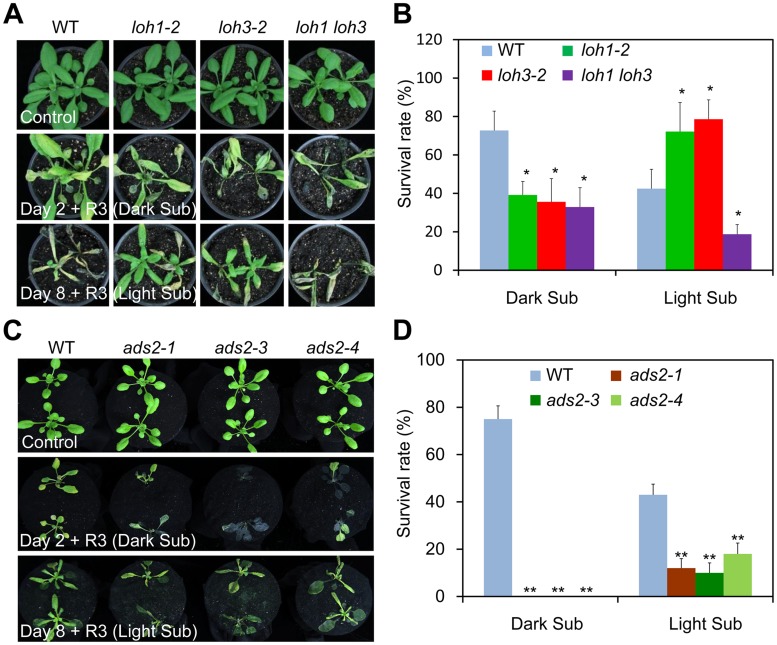Fig 5. The loh1 loh3 knockdown double mutant and ads2 mutants displayed attenuated tolerance to both dark and light submergence.
(A) The response of loh1-2, loh3-2 and loh1 loh3 mutants to hypoxia. Four-week-old wild type (WT), loh1-2, loh3-2, as well as loh1 loh3 were untreated (Control) or dark submergence-treated for 2 d (Day 2 + R3, Dark Sub), or light submergence-treated for 8 d (Day 8 + R3, Light Sub), followed by recovery for 3 d. The experiment has been independently repeated with similar results. (B) Survival rates of WT, loh1-2, loh3-2 and loh1 loh3 in (A) following recovery. (C) The response of ads2-1, ads2-3 and ads2-4 mutants to hypoxia. Three-week-old WT, ads2-1, ads2-3 and ads2-4 plants were untreated (Control) or dark submergence-treated for 2 d (Day 2 + R3, Dark Sub), or light submergence-treated for 8 d (Day 8+ R3, Light Sub), followed by recovery for 3 d. The experiment has been independently repeated with similar results. (D) Survival rates of WT, ads2-1, ads2-3 and ads2-4 in (C) following recovery. The survival rates in (B) and (D) were calculated based on the numbers of plants with capability to produce new leaves and continue to growth after recovery from hypoxic stress. Data are means ±SD (n = 20). *P<0.05, **P<0.01 by Student’s t-test.

